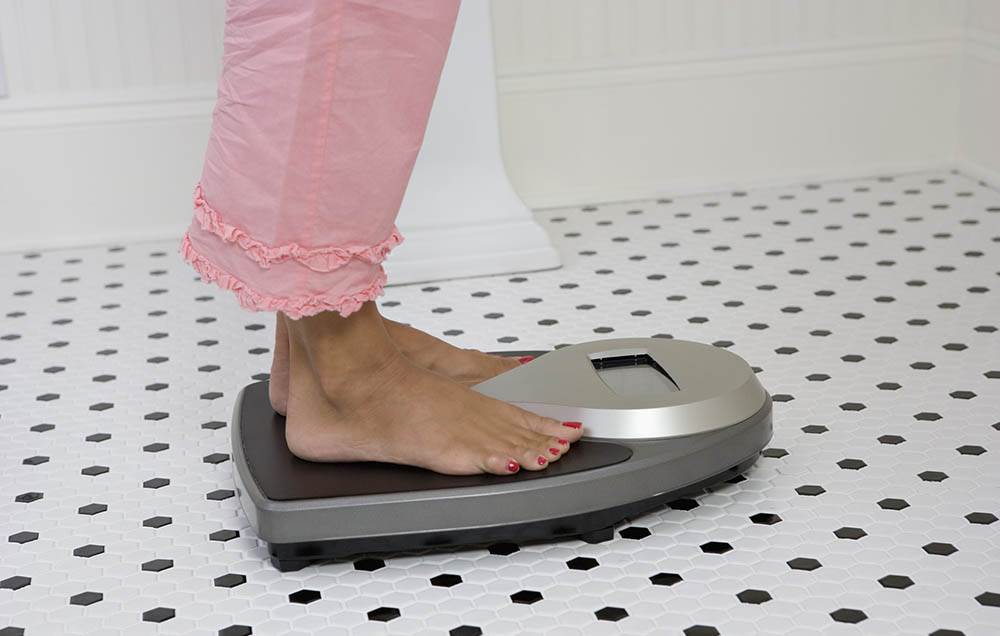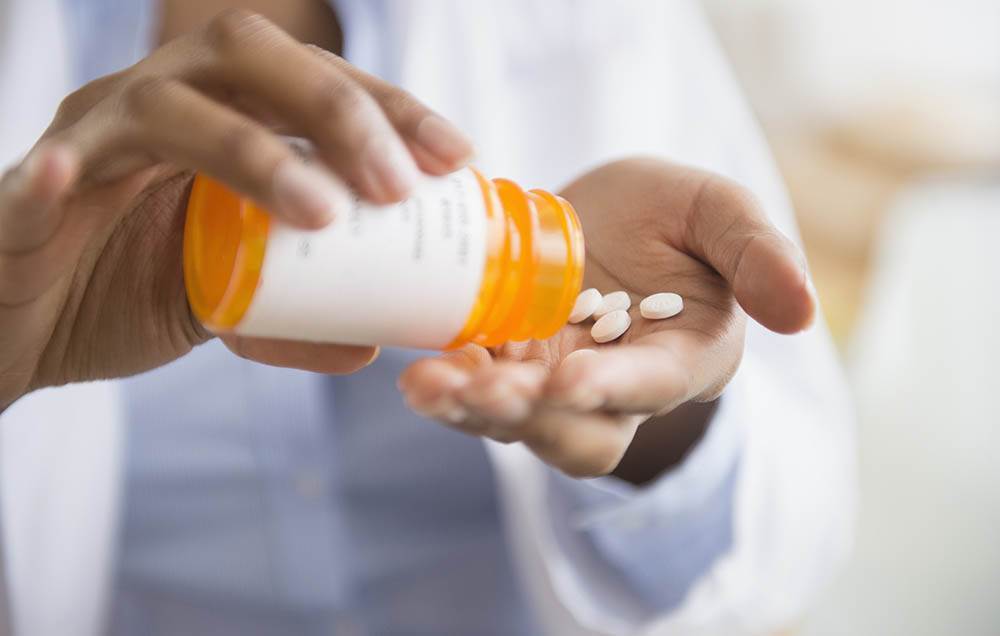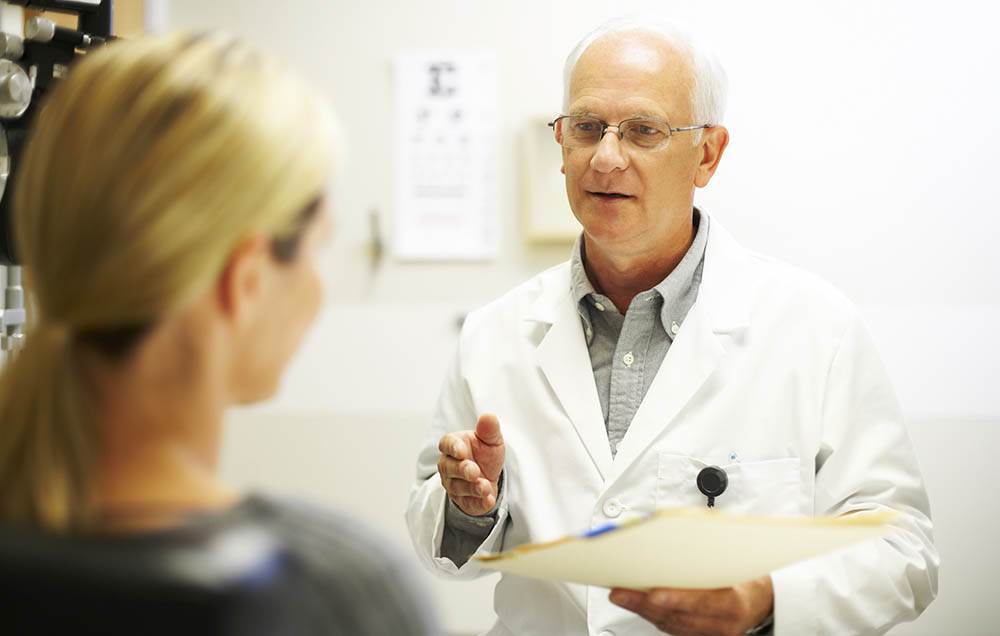Could you be at risk for a vitamin D deficiency? Find out here, plus, exactly how to get out of the D deficient danger zone.
In today’s health-obsessed culture, researching medical conditions online is something that happens pretty darn regularly. But most of the time, we’ll find ourselves thinking, “That could never happen to me.” It’s essentially how we keep ourselves from freaking out and running to the doctor every other week. But here’s the thing: Sometimes what you’re reading can affect you—and this is one of those times, so listen up!
Despite being a land of sunshine, 23% of Australians have a Vitamin D deficiency. Falling short on the nutrient isn’t something to brush off, either. Vitamin D deficiencies are associated with a slew of health concerns, including an increased risk for Alzheimer's disease, diabetes, osteoporosis, and heart disease. Plus, if you're diagnosed with a serious condition like prostate or breast cancer, your chances of survival may be lower than someone with normal levels of vitamin D.
While these stats are alarming, they aren’t all that surprising. Vitamin D isn’t found in abundance in too many foods. (Things like wild salmon and fortified milk and yogurt are the exception.) And the only other way to get the nutrient is by exposing your bare skin to sunlight, something desk-bound office workers aren’t often able to do.
Taking a blood test is the best way to find out if you’re deficient in the nutrient, and insurance and Medicare often cover the expenses, says Carole Baggerly, the director of GrassrootsHealth, a non-profit that aims to increase awareness about vitamin D deficiency. (Your levels should be greater than 50 µg/mL.) While trekking to the doctor to get poked with a needle may not be on your list of Fun Things To Do, it’s definitely a good use of your time—especially if you fall into any of these at-risk groups:











Office workers
If you work a 9-to-5 office job, you likely don’t see too much of the sun. In turn, people with occupations that limit sun exposure are unlikely to obtain adequate vitamin D from sunlight, according to The National Institutes Of Health (NIH). This makes supplementation and a smart diet key to staying healthy. (See if the best way to get vitamin D is through sun exposure.)
Inflammatory bowel disease patients
Vitamin D is a fat-soluble vitamin, which means its absorption depends on the gut’s ability to take in fat. Fat malabsorption is associated with inflammatory bowel disease (IBD), an umbrella term that includes conditions like Crohn's disease and ulcerative colitis. In fact, up to 70% of people with IBD have insufficient vitamin D levels, according to a recent report. If you have IBD, ask your physician how you can ensure you’re getting enough vitamin D.
Vegans and vegetarians
Most foods that naturally contain vitamin D are animal products like wild salmon and egg yolks. And many foods fortified with the nutrient are dairy-based (think: milk and yogurt), so unless vegans, vegetarians, and those with lactose intolerance go out of their way to add vitamin D to their diet, they can easily fall short.
If you don’t eat animal-based foods, look for fortified soymilk and tofu. (Heads up: Not all brands are fortified. Read the label to find out if your go-to brands fit the nutritional bill!) Look for products with at least 30% of your recommended daily value per serving, and include other meat-free sources of the nutrient like oatmeal and Shiitake mushrooms in your diet, too. While these foods have far less of the nutrient than animal sources, every little bit helps!
People with a high body fat percentage
If you have a body mass index (BMI) over 30 or a high body fat percentage, it may be more challenging for vitamin D to circulate throughout your body, the NIH reports. That doesn’t mean you’re destined to be deficient, though. Talk to your doctor to find out how much daily vitamin D is right for you.
People taking certain medications
Yes, medications help keep us healthy, but anyone who’s ever seen a TV commercial for a drug knows the side effects are plentiful (not to mention, a mouthful). Corticosteroid medications such as prednisone (brand names Deltasone, Rayos and Prednicot), weight-loss drugs like orlistat (brand names Xenical and Alli), and the cholesterol-lowering drug cholestyramine (brand names Questran, LoCholest, and Prevalite) can all impair vitamin D metabolism. If you take any of these drugs, be sure to check in with your doctor to find out the best way for you to hit all of your nutritional marks.
Adults over 55
Ageing definitely has its perks: you’re smarter and more confident than ever before, and may even be enjoying a leisurely life of retirement. But of course, it's not without its downsides. As we age some of us may become less mobile, making it difficult to spend as much time outdoors. In turn, we may get less vitamin D than we did in our youth. But not only that, ageing skin cannot synthesise vitamin D as efficiently, according to a 2007 study. So unless you’re taking a daily D supplement, there’s a good chance you’re falling short on the vital nutrient.
People who have constant joint and muscles aches
Have you recently been diagnosed with arthritis or fibromyalgia? Ask your doctor to test your levels of vitamin D. Being deficient in the nutrient can cause joint and muscle pain so it’s possible that's what is actually causing your pain and discomfort.
Also worth noting: Adequate vitamin D can prevent post-workout pain and increase the speed of muscle recovery, Baggerly says. So if you tend to feel sore for days after a run or yoga class, it’s also worth taking a blood test to see if a deficiency could be to blame.
People suffering from depression
People with low levels of vitamin D in their blood are more than twice as likely to be diagnosed with depression than those with higher levels, according to a British Journal of Psychiatry study of more than 31,000 participants. While medical experts aren’t sure why, one hypothesis is that the vitamin may alter hormones and areas of the brain that affect and regulate mood.
People who suffer from chronic headaches
If you suffer from regular headaches, low blood levels of vitamin D may be to blame, according to a 2017 study of 2,600 men. Study participants with the lowest vitamin D levels had a twofold risk of chronic headaches compared to study participants with the highest levels. While the specific link between headaches and vitamin D remains unclear, researchers believe the nutrient may help combat the inflammation that causes migraines and headaches.
People with darker skin
Various reports consistently show lower levels of vitamin D in those who identify as black compared with those who identify as white. This is because darker skinned people have more melanin in their epidermal, the outermost layer of skin, which makes it more challenging for the body to produce vitamin D from sunlight, say experts from the National Academies of Sciences, Engineering, and Medicine’s Foods and Nutrition Board. If you’re darker skinned, you should rely on dietary sources of the nutrient, rather than sunlight to hit your daily vitamin D mark.
Next steps
If it turns out that you are indeed deficient in vitamin D, plan to adjust your diet and start taking a supplement. The Institute of Medicine (IOM) recommends adults get 600 IU of vitamin D every day. But some research suggests that it may actually be beneficial to get up to 7,000 IU a day. Your doctor can recommend a supplement dose and diet plan that’s ideal for you, based on your individual blood test results.










